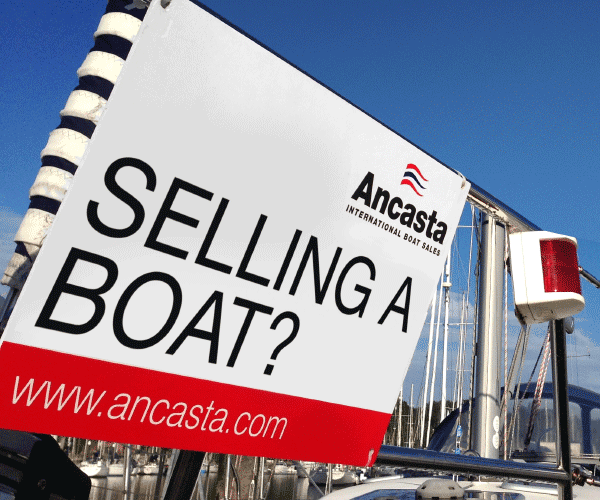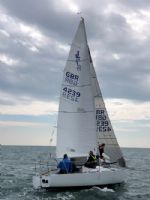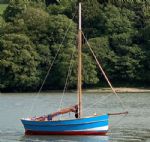-202403121604.gif)












Boats for sale
| J24 (Sail No. 4239) Dartmouth |
 |
| Laser XD 203301 Upminster |
 |
| Laurent Giles 'Jolly Boat' Exeter |
 |
List classes of boat for sale |
Taking penalties |
Post Reply 
|
Page 12> |
| Author | ||
NickM 
Far too distracted from work 
Joined: 27 May 09 Location: United Kingdom Online Status: Offline Posts: 328 |
 Post Options Post Options
 Quote Quote  Reply Reply
 Topic: Taking penalties Topic: Taking penaltiesPosted: 18 Jun 17 at 5:32pm |
|
|
If you have to spin, once you are clear of other boats etc. etc, is it best to start with a tack or gybe? My instinct would be to tack if it was windy but maybe gybe if it was light to work up some momentum.
|
||
 |
||
JimC 
Really should get out more 

Joined: 17 May 04 Location: United Kingdom Online Status: Offline Posts: 6649 |
 Post Options Post Options
 Quote Quote  Reply Reply
 Posted: 18 Jun 17 at 6:33pm Posted: 18 Jun 17 at 6:33pm |
|
|
It will depend on a host of factors, including whether you are on a downwind or upwind leg.
|
||
 |
||
Brass 
Really should get out more 
Joined: 24 Mar 08 Location: Australia Online Status: Offline Posts: 1146 |
 Post Options Post Options
 Quote Quote  Reply Reply
 Posted: 19 Jun 17 at 2:43am Posted: 19 Jun 17 at 2:43am |
|
|
Good article here
But there are a few other key considerations:
Maybe some team racing folk have some useful 'rules of thumb'? |
||
 |
||
NickM 
Far too distracted from work 
Joined: 27 May 09 Location: United Kingdom Online Status: Offline Posts: 328 |
 Post Options Post Options
 Quote Quote  Reply Reply
 Posted: 20 Jun 17 at 8:08pm Posted: 20 Jun 17 at 8:08pm |
|
|
Good article. Thanks Brass.
|
||
 |
||
Guests 
Guest Group 
|
 Post Options Post Options
 Quote Quote  Reply Reply
 Posted: 09 Oct 17 at 11:58am Posted: 09 Oct 17 at 11:58am |
|
I get the idea behind this, but in reality you would have to stop heading up to assert those rights(rule 16)
|
||
 |
||
Brass 
Really should get out more 
Joined: 24 Mar 08 Location: Australia Online Status: Offline Posts: 1146 |
 Post Options Post Options
 Quote Quote  Reply Reply
 Posted: 09 Oct 17 at 10:59pm Posted: 09 Oct 17 at 10:59pm |
|
I don't know what you mean by 'assert those rights'. Either a boat is a right of way boat or it is not. I think you may not be applying rule 16 correctly. Rule 16 is a rule of Section B: it is a limitation on the right of way rules of Section A. It does NOT displace or render the right of way rules inoperable. A right of way leeward boat is perfectly entitled to head up, and a windward boat is required to keep clear: rule 16.1 requires only that, when changing course the leeward boat gives the windward boat room, that is the space, acting promptly and in a seamanlike way to keep clear.
|
||
 |
||
Guests 
Guest Group 
|
 Post Options Post Options
 Quote Quote  Reply Reply
 Posted: 09 Oct 17 at 11:41pm Posted: 09 Oct 17 at 11:41pm |
|
|
I can't imagine a situation when you would need to luff someone as you exited your turns. So I only though about port starboard. Being on port you have no right of way. But, reading the new rules, I think you're right. Previously, when a port boat takes avoiding action, the starboard boat couldn't change course so the port boat had to immediately change theirs. Under the new rules that's only the case when the port boat is ducking. RRS 16.2 In addition, when after the starting signal, boats are about to cross or are crossing each other on opposite tacks, and the port-tack boat is keeping clear of the starboard-tack boat, the starboard-tack boat shall not change course if as a result the port-tack boat would immediately need to change course to continue keeping clear." RRS 16.2 In addition, when after the starting signal a port-tack boat is keeping clear by sailing to pass astern of a starboard-tack boat, the starboard-tack boat shall not change course if as a result the port-tack boat would immediately need to change course to continue keeping clear. Does that mean when to reaching boats meet on opposite tack, and the port boat sails higher to avid the starboard, the starboard boat can dial them up? Edited by mozzy - 09 Oct 17 at 11:44pm |
||
 |
||
Brass 
Really should get out more 
Joined: 24 Mar 08 Location: Australia Online Status: Offline Posts: 1146 |
 Post Options Post Options
 Quote Quote  Reply Reply
 Posted: 10 Oct 17 at 12:52am Posted: 10 Oct 17 at 12:52am |
|
For pete's sake, the unconditional (omitting 'pass astern') version of rule 16.2 was the 2001 version of the rule. It was amended in 2005. Yes, S can dial up, but why on earth would she want to? Bearing in mind that rule 16.2 has been deleted for Match Racing since 2001.
|
||
 |
||
Guests 
Guest Group 
|
 Post Options Post Options
 Quote Quote  Reply Reply
 Posted: 10 Oct 17 at 9:22am Posted: 10 Oct 17 at 9:22am |
|
|
They might want to do it to force a penalty on another boat?
I've been yielding to boats on port when heading up and bearing away unnecessarily for years (exiting mark roundings)! What happens when a port boat tacks to avoid? Can in that moment the starboard boat bear away and call a penalty? Wouldn't that now be the standard defence when port goes for a lee bow tack? Edit: I've read this now Seems the rule was changed to stop port tack boats on a start as the starboard boats racking up would be heading up and preventing a port boat who was until they headed up, keeping clear. Which seems like a good change.
Edited by mozzy - 10 Oct 17 at 9:42am |
||
 |
||
Brass 
Really should get out more 
Joined: 24 Mar 08 Location: Australia Online Status: Offline Posts: 1146 |
 Post Options Post Options
 Quote Quote  Reply Reply
 Posted: 10 Oct 17 at 11:00am Posted: 10 Oct 17 at 11:00am |
|
|
||
 |
||
Post Reply 
|
Page 12> |
| Forum Jump | Forum Permissions  You cannot post new topics in this forum You cannot reply to topics in this forum You cannot delete your posts in this forum You cannot edit your posts in this forum You cannot create polls in this forum You cannot vote in polls in this forum |
Bulletin Board Software by Web Wiz Forums® version 9.665y
Copyright ©2001-2010 Web Wiz
Change your personal settings, or read our privacy policy
Copyright ©2001-2010 Web Wiz
Change your personal settings, or read our privacy policy











 Printable Version
Printable Version Delicious
Delicious Digg
Digg Facebook
Facebook Furl
Furl Google
Google MySpace
MySpace Newsvine
Newsvine reddit
reddit StumbleUpon
StumbleUpon Twitter
Twitter Windows Live
Windows Live Yahoo Bookmarks
Yahoo Bookmarks Topic Options
Topic Options